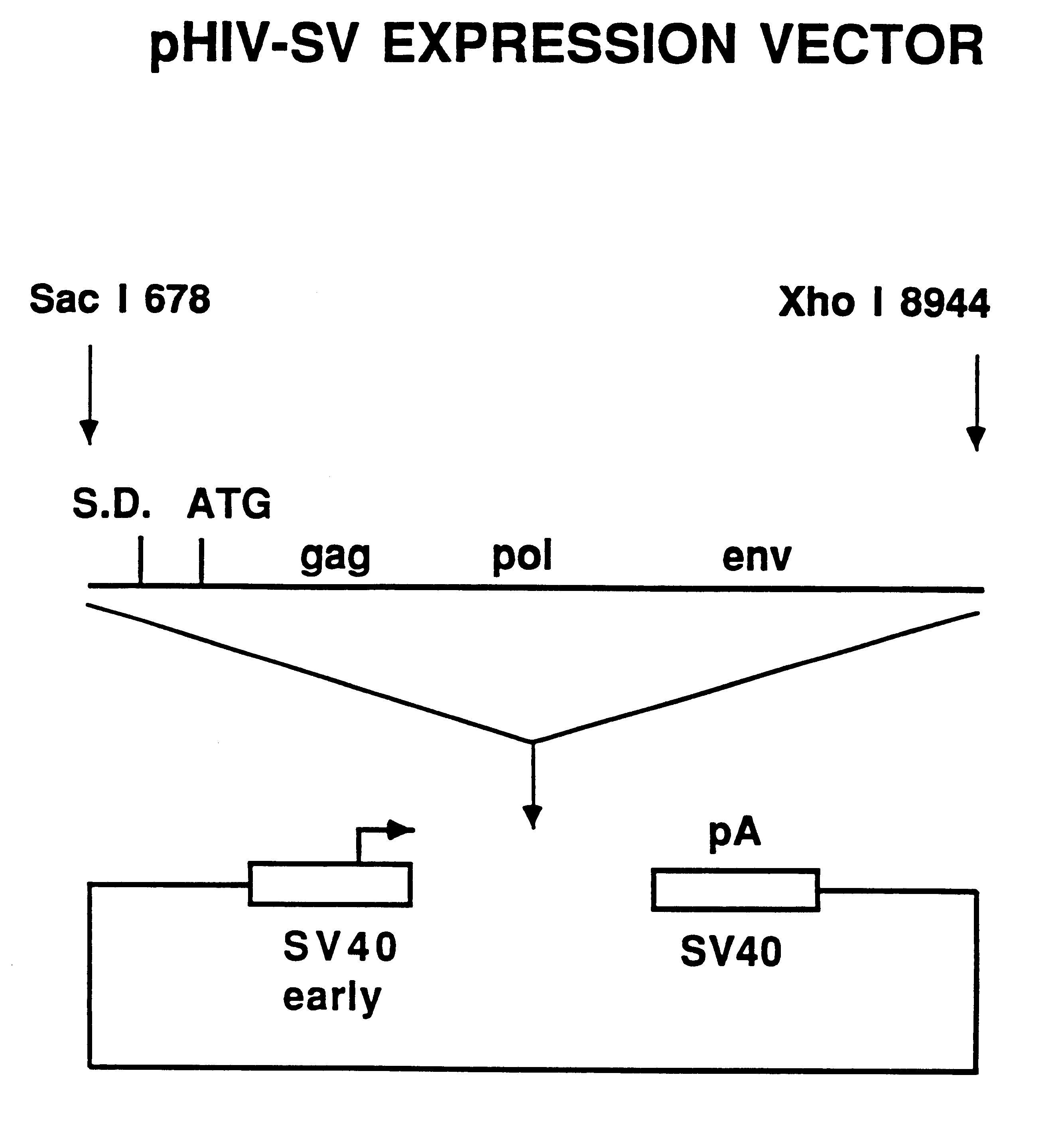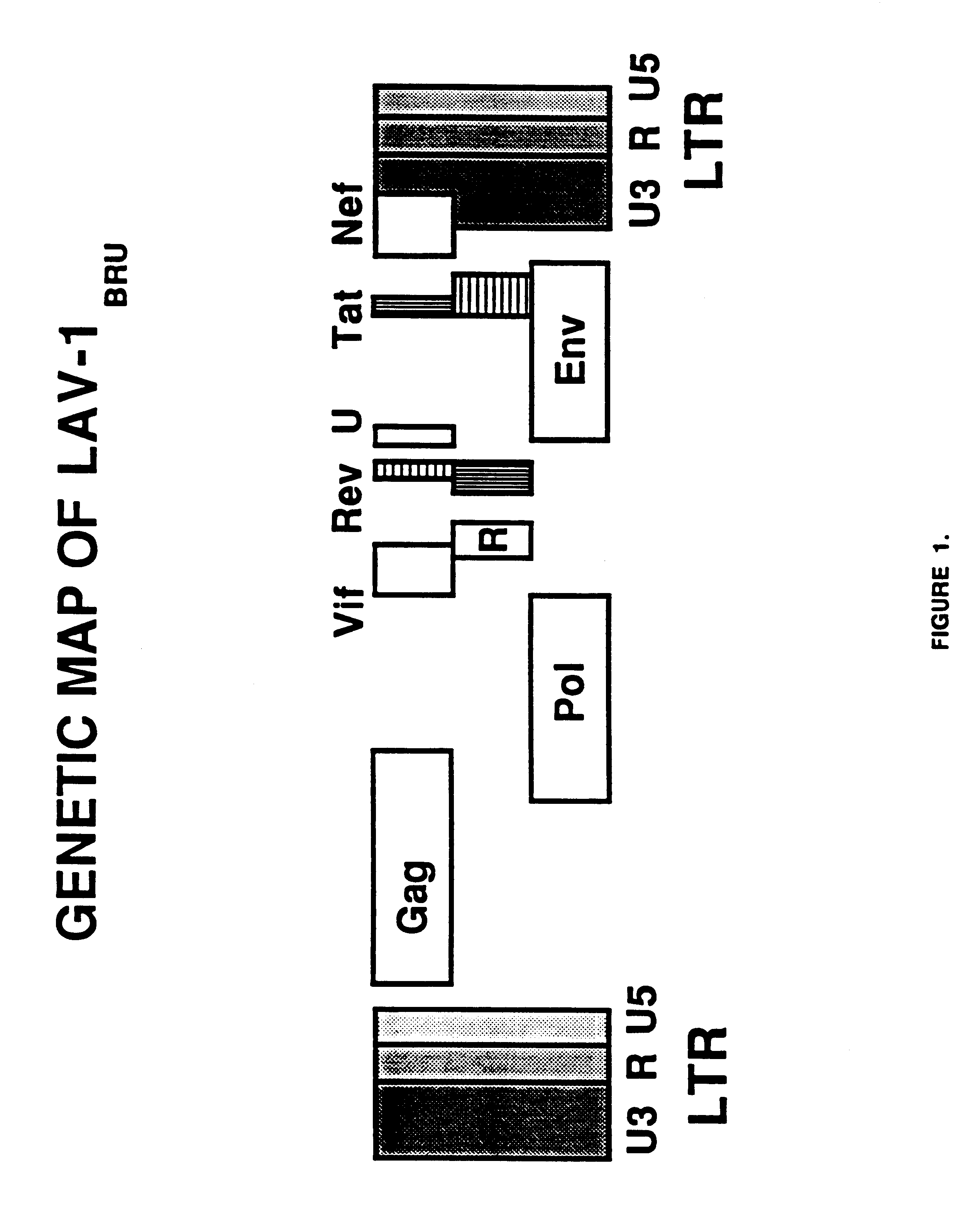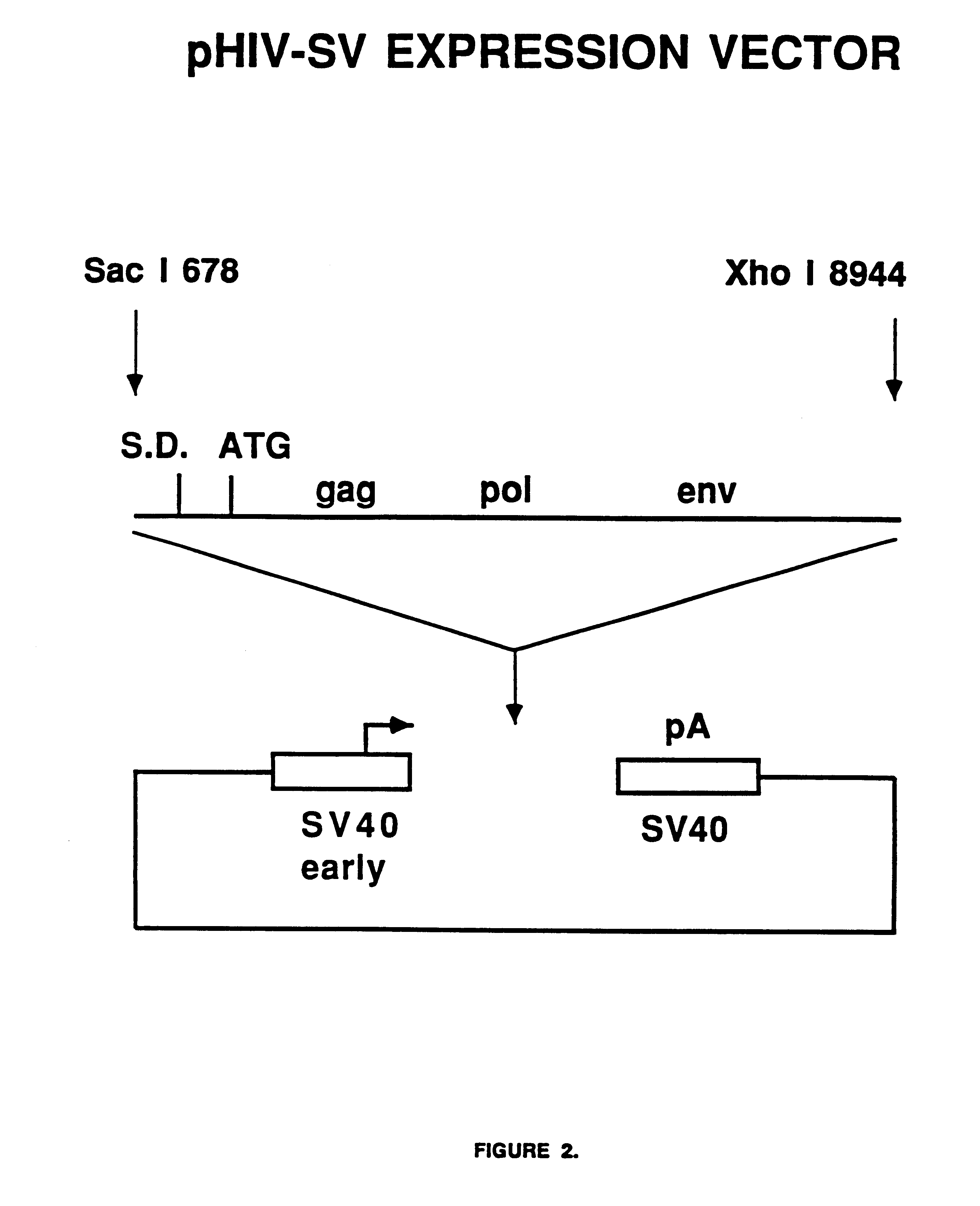Nucleic acids containing modified human immunodeficiency virus genomes devoid of long terminal repeats encoding non-infectious, replication-deficient, immunogenic retrovirus-like particles
a technology of human immunodeficiency virus and genome, which is applied in the field of nucleic acids containing modified human immunodeficiency virus genomes devoid, can solve the problems of inefficient immune responses, less than optimal immune response, and difficulty in producing synthetic molecules mimicking conformational epitopes, and achieves high levels of rt activity, improved levels of non-infectious hiv-1 particle production, and high particle production.
- Summary
- Abstract
- Description
- Claims
- Application Information
AI Technical Summary
Benefits of technology
Problems solved by technology
Method used
Image
Examples
example 1
This Example illustrates the expression of the major HIV protein antigens in cells transfected with an HIV expression construct.
FIG. 2 shows a diagram of the expression construct termed pHIV-SV which contains a single DNA fragment containing HIV-1 protein coding information from the LAV-1.sub.BRU strain starting at nucleotide position 678 and ending at nucleotide position 8944. This 8.3 kb fragment was made blunt-ended using the Klenow fragment of E. coli DNA polymerase I and inserted into a blunt HindIII site of a Vluescript-based expression vector containing the SV40 virus early promoter and late polyadenylation site. The SV40 promoter and polyadenylation sites were obtained from commercially available cloning vectors. The pHIV-SV vector is suitable for transient expression in monkey COS cells due to the presence of the SV40 virus origin of DNA replication.
Fifteen micrograms of the plasmid pHIV-SV was transfected into COS-7 cells in a 25 cm.sup.2 flask using standard calcium phosp...
example 2
This Example illustrates the sedimentation of high molecular weight material associated with reverse transcriptase activity from culture supernatants of transfected-COS cells.
Plasmid pHIV-CHO-SV (FIG. 3) is similar to pHIV-SV but employs the adenovirus major late promoter and two copies of the human cytomegalovirus immediate early enhancer instead of the SV40 virus early promoter. This plasmid also contains the SV40 virus origin of replication for transient expression analysis. The two copies of the human cytomegalovirus immediate early enhancer span the region from nucleotide position -524 to -218 which was constructed from overlapping synthetic oligonucleotides. The enhancer fragments are located upstream from the adenovirus major late promoter which is contained within a 292 bp XhoI-PvuII fragment from adenovirus-2 genomic DNA encompassing the major late promoter and the 5' end of the first exon of the tripartite leader. This 292 bp fragment was ligated to a synthetic 140 bp frag...
example 3
This Example illustrates the presence of multiple HIV-1 antigens associated with high molecular weight material released in the supernatants of transfected COS cells.
Twenty five ug of the plasmid pHIV-SV was transfected into COS cells in a 75 cm.sup.2 culture flask using a commercial Lipofectin transfection kit. Eight mL of the 10 mL medium supernatant was harvested three days post-transfection and particulate material was pelleted at 100,000.times.g through a 20% glycerol cushion for subsequent Western blot analysis. Pellets were suspended in 100 uL of TNE (150 mM NaCl, 50 mM Tris-HCL, 1 mM EDTA, pH 7.5) prior to the addition of SDS-PAGE sample buffer and electrophoresed on a 12.5% SDS-polyacrylamide gels using standard methodologies. Proteins were electrophoretically transferred to Immobilon membranes (Millipore) for subsequent reaction with a cocktail of four monoclonal antibodies specific for gp120 (DuPont, NEA-9384), p24 (Dupont, NEA-9306), p17 (DuPont, NEA-9282) and gp41 (DuPo...
PUM
| Property | Measurement | Unit |
|---|---|---|
| Density | aaaaa | aaaaa |
| Density | aaaaa | aaaaa |
| Density | aaaaa | aaaaa |
Abstract
Description
Claims
Application Information
 Login to View More
Login to View More - R&D
- Intellectual Property
- Life Sciences
- Materials
- Tech Scout
- Unparalleled Data Quality
- Higher Quality Content
- 60% Fewer Hallucinations
Browse by: Latest US Patents, China's latest patents, Technical Efficacy Thesaurus, Application Domain, Technology Topic, Popular Technical Reports.
© 2025 PatSnap. All rights reserved.Legal|Privacy policy|Modern Slavery Act Transparency Statement|Sitemap|About US| Contact US: help@patsnap.com



